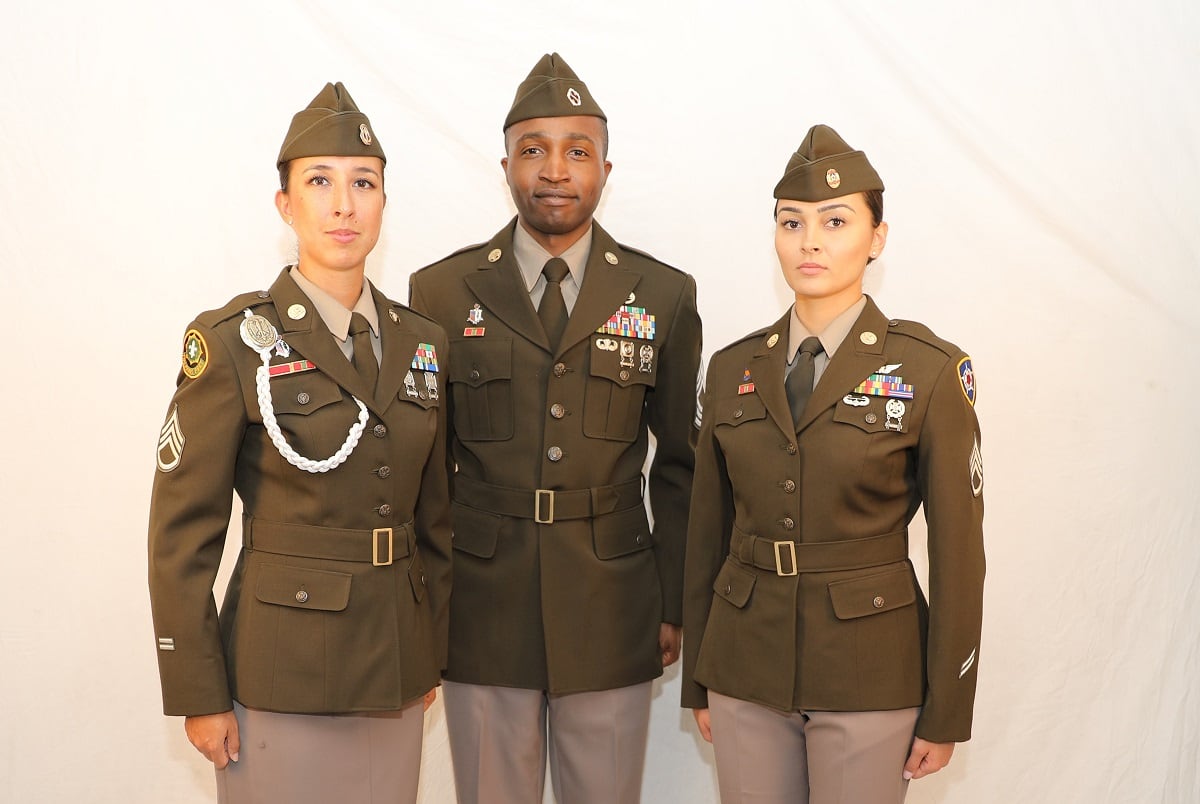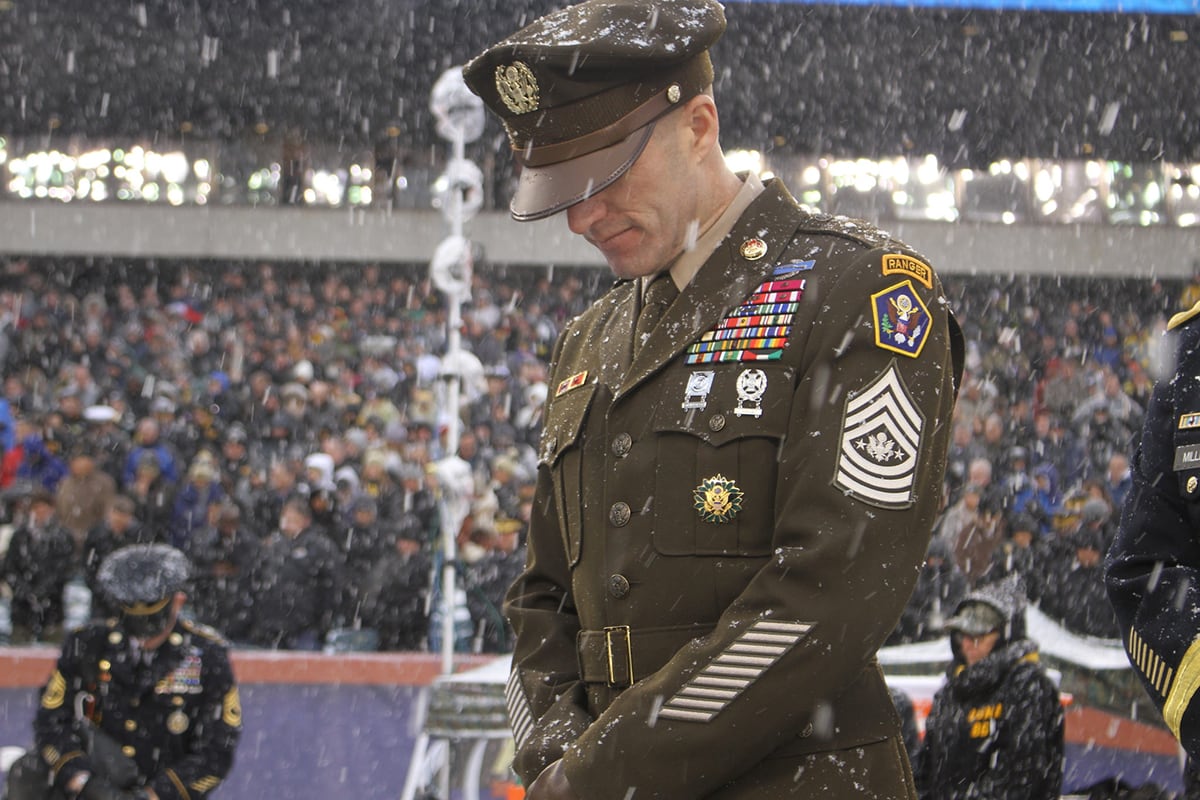The Army is preparing to field about 200 new Army Greens uniforms to recruiters as early as this month, according to the service’s top enlisted soldier.
The upcoming wear test will get the new service uniform on the Army’s most public-facing soldiers, Sergeant Major of the Army Dan Dailey told retired Sergeant Major of the Army Ken Preston in a podcast posted on Monday, while the service prepares to finalize the uniform’s wear regulations and solicit a manufacturing contract.
“And then there’s some talk of, should we reduce the amount of things that we have on the [Army Service Uniform], versus the Army Greens uniform, to make it more simple?” Dailey said on the first episode of AUSA’s Army Matters.
The Greens will take over the ASU’s “service” duties, bumping the blues up to a dress option.
But with the greens serving as a more day-to-day uniform for official events or at headquarters offices, it might not need the amount of ribbons, badges and other insignia worn on the ASU, whose level of decoration has been compared to a Christmas tree.
“If we look at what they wore during that period, it was much less than what we wear today,” Dailey said of the World War II-era “pinks and greens," the inspiration for today’s version.
One decision has already been made, Dailey said ― no name tag on the greens.
“I got a lot of comments on the Internet about me missing my name tag,” he said, adding that current guidance requires the same decorations as the ASU, without the name tag.
In fact, that level of adornment played into the reasoning behind creating the greens in the first place, Dailey said.
The ASU was designed to consolidate the number of uniforms a soldier has to keep, during a time when the Army Combat Uniform was becoming more and more common for everyday wear, as units were regularly training for and deploying in support of operations in Iraq and Afghanistan.
“But we’re wearing our tuxedos to work," he added, as the ASU became standard for meeting with officials, testifying to Congress or speaking engagements.
In the mid-2000s, then-Army Chief of Staff Gen. Peter Schoomaker authorized the then brand new ACU for everyday wear throughout garrison formations, a visual reminder of a “nation at war.”
Since then, camouflage has been the go-to uniform for soldiers, up to and including the chief of staff and others while working in an office.
“We simply just don’t wear our uniforms enough anymore,” Dailey said. "We’ve been at war for an extended period of time now, and we’ve got to get our soldiers back into a professional uniform that the American people can look at and say, ‘That’s the kind of person I want my son or daughter to aspire to me.’ "
With that in mind, recruiters will be the first to get the greens.
“So they can be in that uniform on a day-to-day basis, to show the American public that there’s a professional soldier out there,” Dailey said.
RELATED

The uniform is not scheduled to go Army-wide until next year, when it will be issued to new soldiers either at the end of advanced individual training or when they report to their first units.
In the mean time, some details still have to be worked out. Among them, Dailey said, are brown jump boots for soldiers in airborne units, who currently blouse their blues pants into a black version.
“Those prototypes should be in my office in about a week or two,” he said.
Meghann Myers is the Pentagon bureau chief at Military Times. She covers operations, policy, personnel, leadership and other issues affecting service members.





